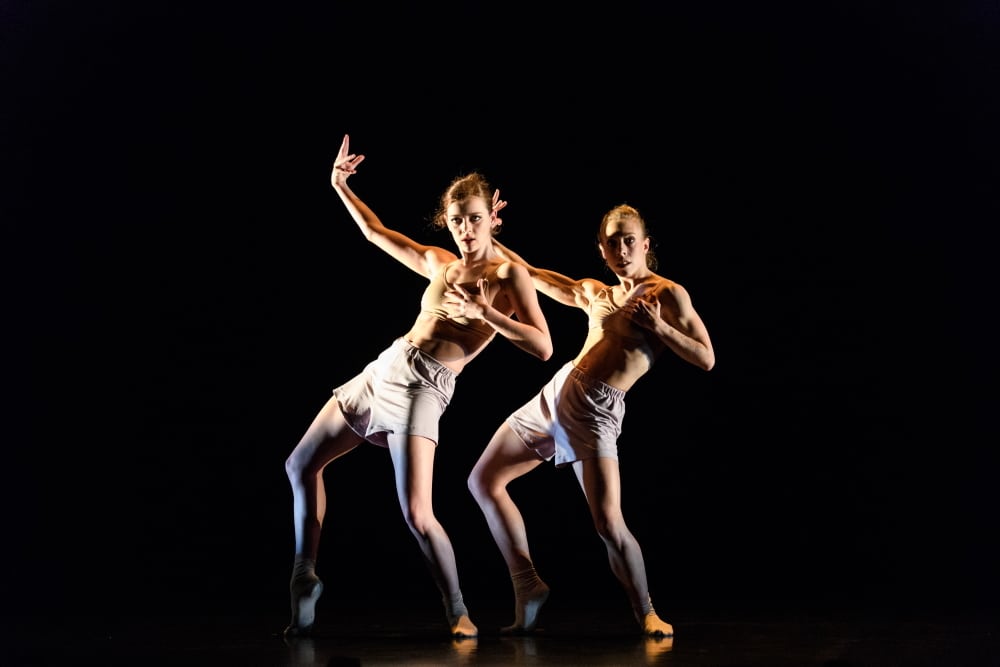Dancing and Screaming Against the Sky
“Profanations,” created by choreographer Faustin Linyekula and music artist Franck Moka, is not a “just” dance piece: it’s a live concert, a cinematic séance.
Continue Reading
World-class review of ballet and dance.
Tonight's little surprise, a small bonus routine, comes in the form of dancer and choreographer Jack Webb's incredible new work “Drawn to Drone,” performed by soloist Christopher Harrison and with a hypnotic soundscape by Webb himself. Using two white chairs only, Harrison enters the space, methodically strips down to underwear and sits on the lined-up chairs, tentatively stretching and contorting his limbs, which seem to move independently of his body. His arms and legs raise up in slow motion, and the focus is entirely concentrated on the geometric shapes he creates. He seems like an astronaut on a space flight simulator, where the chairs are becoming like extensions of his body. It is reminiscent at times of David Bowie in Nicolas Roeg's classic The Man Who Fell to Earth, where the young Bowie sits isolated in a room, an alien in a hostile planet. An intense, mesmerising piece, with almost sci-fi precision, it is impossible to take your eyes off the wonderful Harrison.
Performance
Place
Words

Scottish Ballet in “Sibilo,” choreography by Sophie Laplane. Photograph by Jane Hobson


“Uncommonly intelligent, substantial coverage.”
Your weekly source for world-class dance reviews, interviews, articles, and more.
Already a paid subscriber? Login
“Profanations,” created by choreographer Faustin Linyekula and music artist Franck Moka, is not a “just” dance piece: it’s a live concert, a cinematic séance.
Continue ReadingWhen Alban Lendorf (b. 1989) was four, he became attentive to the piano. As he explained in an interview with Pointe magazine, when his lessons advanced to the learning of a Chopin waltz, his piano teacher suggested he take dance classes to help open up the music. From the school of The Royal Danish Ballet to the company, his career rocketed forward; by the time he turned twenty-one, he was a principal dancer, still playing the piano and testing a latent gift for acting.
Continue ReadingMarie Antoinette is not an entirely sympathetic character. Her penchant for luxury and extravagance—and the degree to which she was out of touch with the lives of the majority— made her a symbol of the wealth disparity that prompted the French Revolution.
Continue ReadingAscending the Guggenheim Museum's rings through Rashid Johnson's retrospective, “A Poem for Deep Thinkers,” is a dance in of itself.
Continue Reading
comments